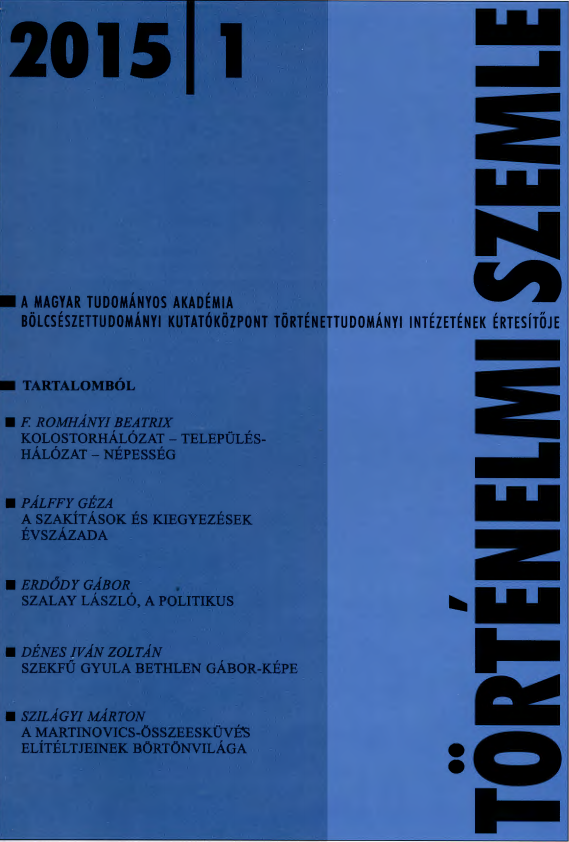Kolostorhálózat – településhálózat – népesség - A középkori Magyar Királyság demográfi ai helyzetének változásaihoz
Monastic Network – Settlement System – Population. On the demographic changes of the medieval Hungarian Kingdom
Author(s): Beatrix F. RomhányiSubject(s): Christian Theology and Religion, Geography, Regional studies, Middle Ages, Demography and human biology
Published by: Magyar Tudományos Akadémia Bölcsészettudományi Kutatóközpont Történettudományi Intézet
Keywords: monastic network; settlement system; population; demography; middle age; Hungarian Kingdom;
Summary/Abstract: Based on the analysis of the changing network of monasteries in medieval Hungary the aim of the present paper is to model the demographic evolution of the country, as well as to interpret the results in a European context. The reliability of data is not equal throughout the whole period between ~1000–~1550. The set of data before 1200 represents a minimum of the once existed institutions. The main results of the analysis are: – The correlation between the first foundations and the late Roman and 9th century settlement system (SW from the Sopron–Pécs line). The road from Lorrain to the Balkans through the Alps appears on the early map, the Amber Road, the Limes Road and the Roman Road south from the Drava River are not reflected in the monastic network till the 13th century. – The country’s settled area reached the borders by the mid-13th century. The institutions entered Transylvania from the north, the importance of the Maros Valley increased from the mid-12th century. Despite the foundation of the Zagreb Bishopric in 1091 the monastic network of Slavonia began to develop only around 1200. In the same period the network of the Great Plain changed radically, the early monasteries disappeared, while the new orders settled late and sporadically in the region. – The immigration of Orthodox population to the Temes Region and the Transylvanian Mountains is reflected in the monastic network in the 15th century. – In the case of the mendicant orders the time of the first foundations and the average density of their network correspond to Western European standards, but their evolution was slower. The late coming of the Carmelites is characteristic all over East Central Europe. The relative weight of the country within the mendicant network of Europe increased constantly till the 1520s. – With regard on “monastic sustainability” in European context the population of the Hungarian Kingdom reached 3.500.000 around 1500. Population density of Transdanubia and Slavonia seems to have been higher than supposed earlier. – As far as settlement history is concerned, the analysis of the monastic network and of the archaeological data reveal two major periods (8th–12th c., 14th–16th c.). The long 13th century was a period of transition in which the Mongol invasion acted as a catalyzing factor. Among the reasons of the transformation environmental (climatic, hydrologic) factors played a crucial role.
Journal: Történelmi Szemle
- Issue Year: 2015
- Issue No: 01
- Page Range: 1-48
- Page Count: 48
- Language: Hungarian

